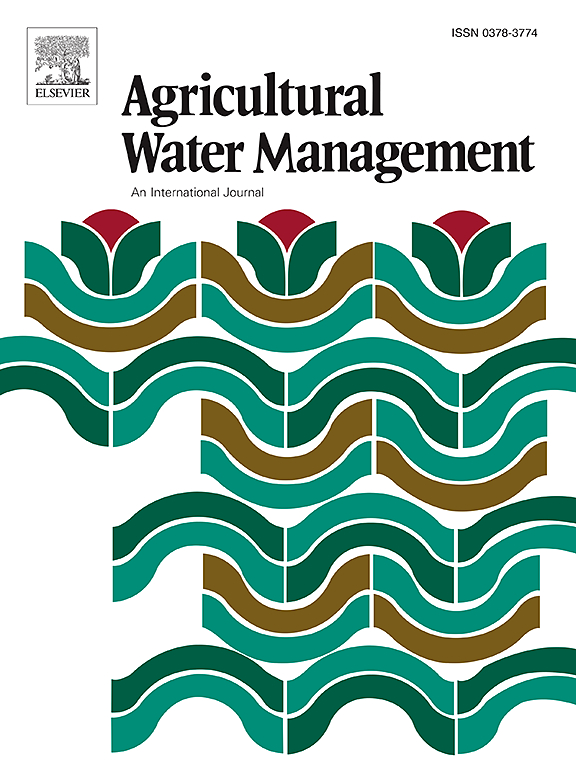用于农业干旱预测的机器学习模型和可解释人工智能的比较分析:大别山案例研究
IF 5.9
1区 农林科学
Q1 AGRONOMY
引用次数: 0
摘要
全球气候变化导致干旱的频率和严重程度不断上升,给农业带来了巨大挑战,尤其是在经济严重依赖农业的中国大别山区。准确的干旱预测和对干旱机理的了解对于减少干旱造成的损失至关重要。本研究提出了一个将机器学习与可解释人工智能(XAI)相结合的框架,用于预测和分析大别山区的农业干旱。该框架采用了四种机器学习模型:极端梯度提升 (XGBoost)、随机森林 (RF)、长短期记忆 (LSTM) 网络和反向传播神经网络 (BPNN)。这些模型在 2000 年至 2021 年的数据上进行了训练,并将 2022 年作为独立案例研究,以评估其预测准确性。结果表明,XGBoost 和 RF 模型在所有指标上都表现出较高的准确性,明显优于 LSTM 和 BPNN 模型。此外,该框架还将 Shapley Additive Explanations (SHAP) 与 RF 和 XGBoost 模型相结合,以分析农业干旱事件中各种驱动因素的贡献。例如,在 2019 年秋季干旱中,气象特征的贡献率为 75.53%,而土壤、地形和社会经济因素的贡献率分别为 8.86%、8.59% 和 7.03%。分析研究了关键因素与空间模式之间的相互作用,显示了这些因素的贡献如何随干旱严重程度和地点而变化。这为了解不同因素在干旱预测中的作用提供了详尽的见解。总之,该框架具有通过数据更新实现近实时干旱动态的潜力,可应用于类似地区,帮助当地决策者制定有效的水资源管理策略。本文章由计算机程序翻译,如有差异,请以英文原文为准。
Comparative analysis of machine learning models and explainable AI for agriculture drought prediction: A case study of the Ta-pieh mountains
The rising frequency and severity of droughts due to global climate change have posed significant challenges to agriculture, particularly in the Ta-pieh Mountains of China, where the economy relies heavily on agriculture. Accurate drought prediction and understanding mechanisms are essential for reducing drought-related losses. This study proposes a framework that integrates machine learning with explainable artificial intelligence (XAI) to predict and analyze agricultural droughts in the Ta-pieh Mountains. The framework employs four machine learning models: Extreme Gradient Boosting (XGBoost), Random Forest (RF), Long Short-Term Memory (LSTM) networks, and Backpropagation Neural Networks (BPNN). The models were trained on data from 2000 to 2021, with 2022 serving as an independent case study to evaluate their prediction accuracy. Results indicate that XGBoost and RF models demonstrated high accuracy across all metrics, significantly outperforming the LSTM and BPNN models. Additionally, the framework integrates Shapley Additive Explanations (SHAP) with RF and XGBoost models to analyze the contributions of various driving factors in agricultural drought events. For example, in the autumn drought of 2019, meteorological features contributed 75.53 %, while soil, topographic, and socio-economic factors contributed 8.86 %, 8.59 %, and 7.03 %, respectively. The analysis examined interactions between key factors and spatial patterns, showing how their contributions varied with drought severity and location. This offers detailed insights into the roles of different factors in drought prediction. In conclusion, this framework has potential for near real-time drought dynamics through data updates and can be applied to similar regions, aiding local decision-makers in effective water resource management strategies.
求助全文
通过发布文献求助,成功后即可免费获取论文全文。
去求助
来源期刊

Agricultural Water Management
农林科学-农艺学
CiteScore
12.10
自引率
14.90%
发文量
648
审稿时长
4.9 months
期刊介绍:
Agricultural Water Management publishes papers of international significance relating to the science, economics, and policy of agricultural water management. In all cases, manuscripts must address implications and provide insight regarding agricultural water management.
 求助内容:
求助内容: 应助结果提醒方式:
应助结果提醒方式:


